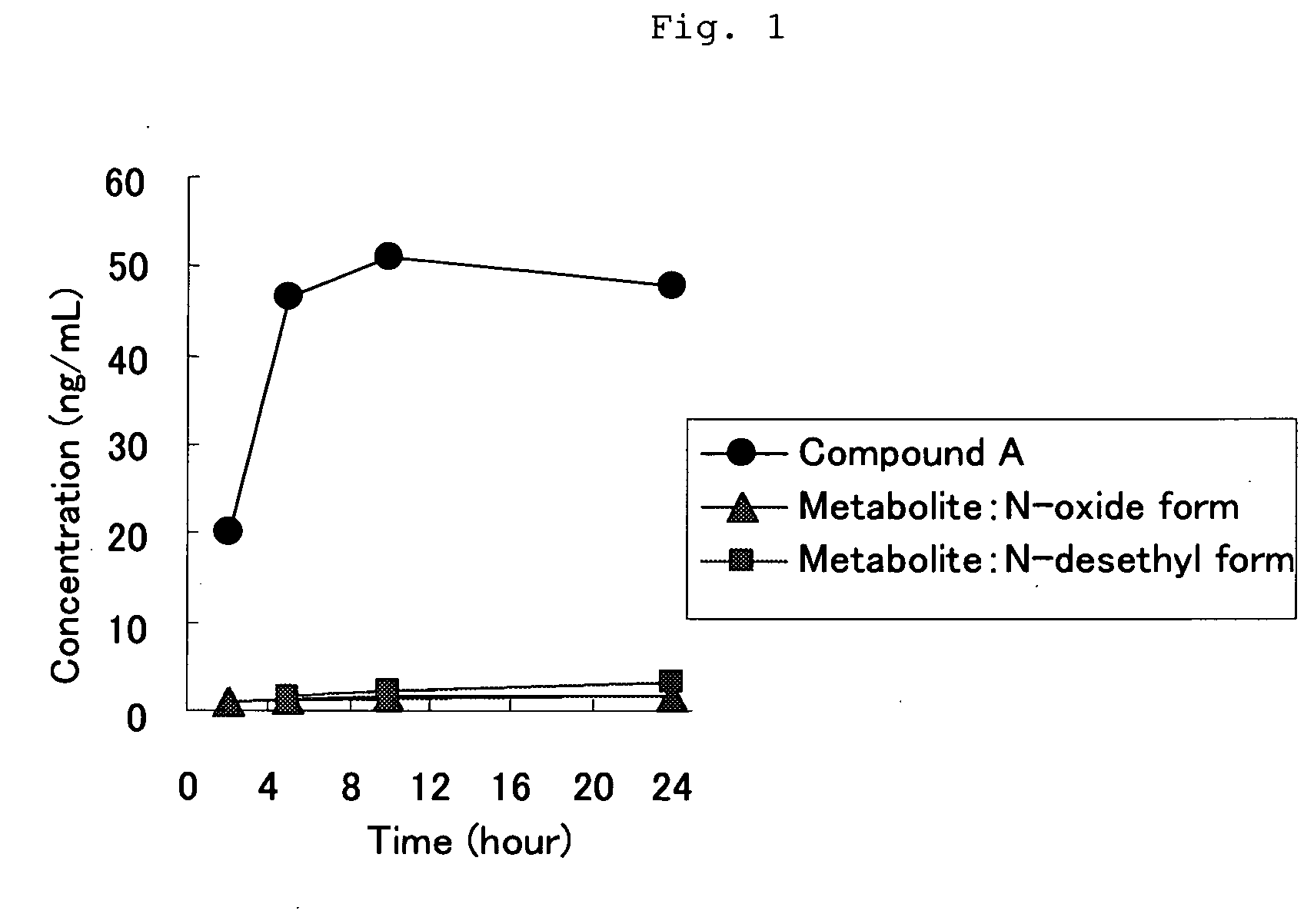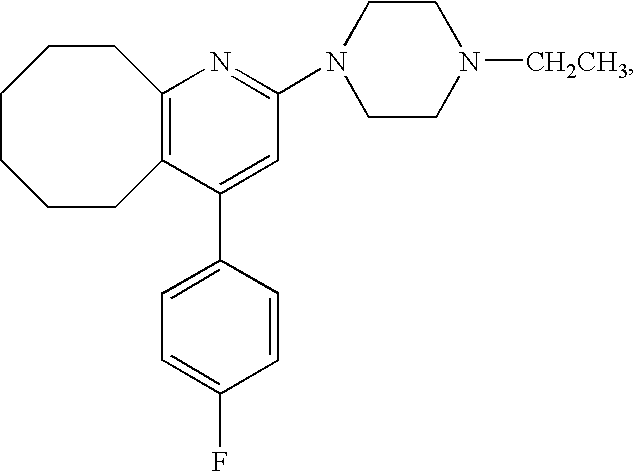Novel Tape Preparation
a technology of tape and blonanserin, which is applied in the field of tape preparation, can solve the problems of difficult or very difficult to develop a percutaneous absorption formulation using a medicament useful as an oral preparation, difficult to foresee the effect of first-pass effect, and inability to foresee such permeability of medicaments or the effect of additive agents, etc., to enhance the skin permeability of blonanserin and inhibit the generation of metabolites
- Summary
- Abstract
- Description
- Claims
- Application Information
AI Technical Summary
Benefits of technology
Problems solved by technology
Method used
Image
Examples
example 1
A Tape Preparation of the Present Invention
[0049]22.018 g of an acrylic adhesive (POLYTHICK 410-SA, Sanyo Chemical Industries, Ltd. (residue on evaporation: 38% by weight)), 0.044 g of a curing agent (POLYTHICK SC-75, Sanyo Chemical Industries, Ltd. (residue on evaporation: 75% by weight)) and 6 ml of ethyl acetate were mixed. To the mixture, Compound A was added so that the adhesive layer should contain Compound A in a concentration of 16%, and the given mixture was stirred well. The mixture was flatly laid on a support so that the thickness of the adhesive layer after dried should be about 50 μm. And then it was dried at room temperature for a week. Then, a release liner was laminated on the opposite side of the adhesive layer to the support to prepare a tape preparation.
experiment 1
Experiment of Percutaneous Absorption
[0050]Six-week-aged SD male rat was anesthetized, and the back thereof was epilated. The tape preparation of Example 1 which had a 5 cm×5 cm square was administered to the epilated back of the rat, and the blood was chronologically collected and divided into serum. The serum was assayed with LC / MS / MS, and thereby the concentrations in the serum of Compound A and the following N-oxide form and N-desethyl form which are metabolites thereof were chronologically measured. The results are shown in FIG. 1. It was found that the administered amount was about 6.5 mg / kg by assaying the residual amount of Compound A in the tape preparation after use.
[0051]The course of blood level of Compound A and N-oxide form and N-desethyl form which are metabolites thereof in the case that Compound A was orally administered to a rat has already been reported (Reference 1). According to FIG. 5 in the document, the ratio of each metabolite (around in Cmax) against Compou...
example 2
[0053]4.77 g of an acrylic adhesive (POLYTHICK 410-SA, Sanyo Chemical Industries, Ltd.), 10.0 mg of a curing agent (POLYTHICK SC-75, Sanyo Chemical Industries, Ltd.) and 1.2 ml of ethyl acetate were mixed. To the mixture, Compound A was added so that the adhesive layer should contain Compound A in 9%, and the given mixture was stirred well. The mixture was flatly laid on a support so that the thickness of the adhesive layer after dried should be about 50 μm. And then it was dried at room temperature for a week. Then, a release liner was laminated on the opposite side of the adhesive layer to the support to prepare a tape preparation.
PUM
| Property | Measurement | Unit |
|---|---|---|
| thickness | aaaaa | aaaaa |
| thickness | aaaaa | aaaaa |
| thickness | aaaaa | aaaaa |
Abstract
Description
Claims
Application Information
 Login to View More
Login to View More - R&D
- Intellectual Property
- Life Sciences
- Materials
- Tech Scout
- Unparalleled Data Quality
- Higher Quality Content
- 60% Fewer Hallucinations
Browse by: Latest US Patents, China's latest patents, Technical Efficacy Thesaurus, Application Domain, Technology Topic, Popular Technical Reports.
© 2025 PatSnap. All rights reserved.Legal|Privacy policy|Modern Slavery Act Transparency Statement|Sitemap|About US| Contact US: help@patsnap.com



